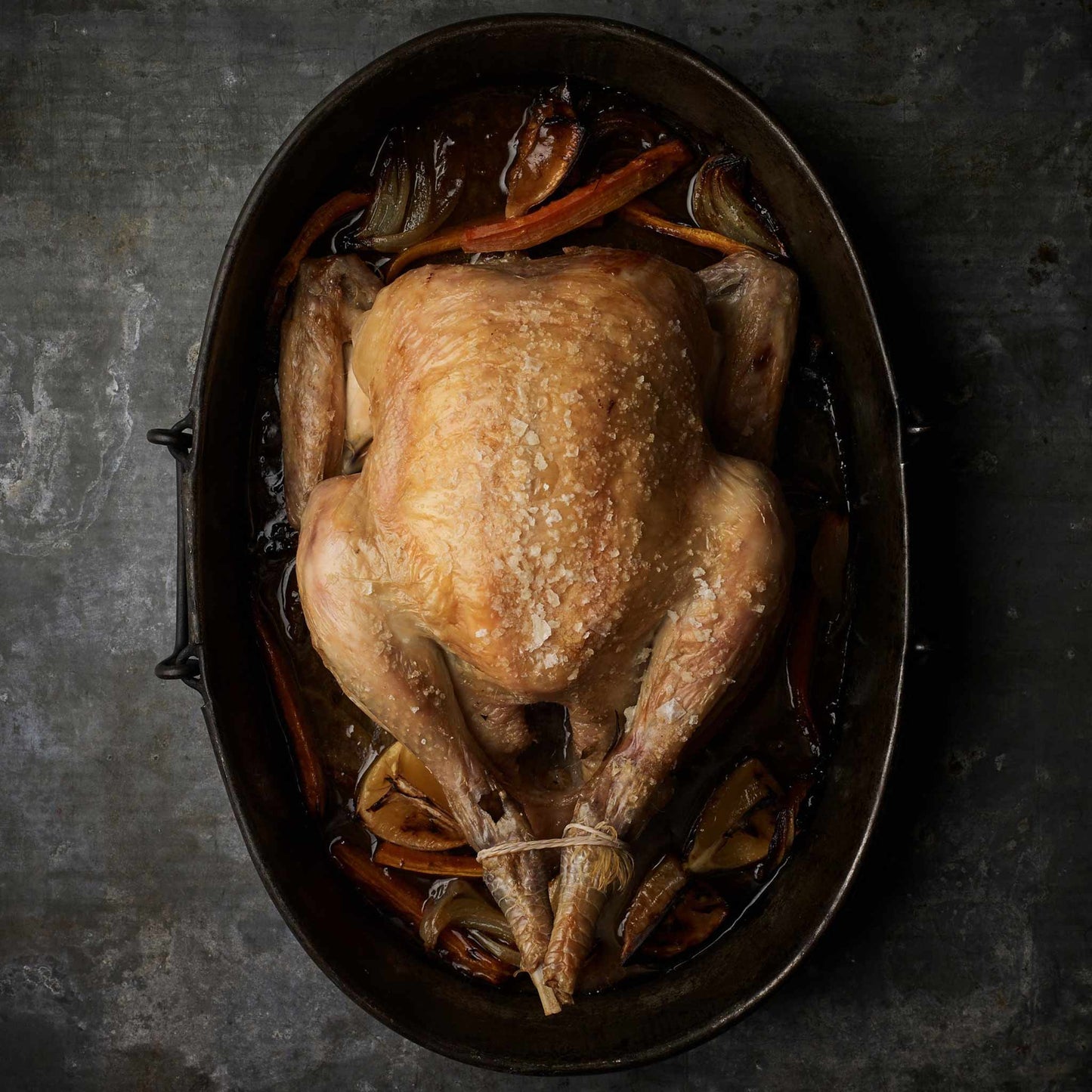We source our chicken from one farm in Leicestershire. The farm is Pasture for Life certified and rears truly free range, outdoor birds.

What is the Celtic tree calendar
In simple terms the Celtic Tree Calendar is the representation of the changing year using trees instead of months - the changing of the trees being linked to the lunar cycle of 28 days. So, there are 13 trees in the year out of synch with our traditional Roman calendar.
The tree calendar focusses our attention on the changing seasons through nature. The tree calendar is surprisingly a relatively modern interpretation of something very very ancient.
In 1946 Novelist and poet Robert Graves wrote his study on Celtic mythology ‘The White Goddess’ in 1946 - it was published 2 years later in 1948.
Graves took the idea of the early-medieval Irish ogham alphabet, which was believed to be based on trees, and re-arranged it to suit his idea of a Celtic Tree Calendar, naming 13 months after trees.
The ogham alphabet itself, which looks rather rune-like with branching lines (like trees and our fehu) dates from the 5th and 6th centuries. It’s a form of lettering that’s found carved on monumental stones.
The birch tree month
from: Tree to my door
"It is almost always one of the first species to regrow in places of tragedy, a forest fire perhaps or even after the great ice age. It can thrive in harsh conditions of low nutrient soils and colder climates. It’s also one of the first trees to regrow leaves after the depths of winter bringing us into the new life of spring. It’s widespread across the British Isles and a coloniser of many UK woodlands.
The native tree holds strong connections with feminine energies and in Celtic Lore is known as ‘The Lady of the Woods’. It’s most recognisable features are the paper thin bark that peels to reveal dark fissures along the trunk and the delicate, flowing leaves that cover the tree in summer.
The beauty of the tree can be seen in every season making it a great specimen tree for the garden. Silver birch trees are amazing for garden wildlife. The tree is a great attraction and will be unconditionally adored by the birds and the bees.
As the birch is a pioneer species this gives it a symbol of rebirth, new beginnings and growth. It’s a sacred tree within the mythology of the Celts and is thought to have very protective influences.
On Midsummer's Eve, branches from the tree would be hung around doors of dwellings in hopes to bring good luck and guard against any evil misfortune. To bring in the new year with goodness, evil spirits were brushed from homes using a broom made from the twigs of a birch tree.
Not just magical but also medicinal, the leaves of the birch can be brewed into a tea that can be used to treat infections and remove excess water from the body.
The Birch Tree was the centre of the Beltane Festival, now more commonly known to us as May Day. Maypoles would be created from the wood of the birch and everyone would gather round and dance to ensure a fruitful harvest that year."
Birch as medicine
Medicinally, the birch leaves and twigs act superbly as an anti-inflammatory analgesic pain reliever. The twigs are steeped in high proof alcohol to extract and preserve the wintergreen oil (terpene), which contains methyl salicylates. Twigs and small branches are harvested in the spring when the sap begins its upward movement to the tips of the branches and in the summer. As fall approaches, terpene production goes down, only to be boosted in the spring once again. The oil is useful in treating those with rheumatism, arthritis, calcium spurs, heart and kidney edema, chronic cystitis and high cholesterol. The bark and dried leaves are useful as a tea.

The leaves are gathered in the spring and dried for use in infusions. Gather the leaves in the spring when they are fully opened and in the morning before the heat of the day releases the essential oils. Birch is astringent and used for its curative effects on skin eruptions and wet eczema. Try steeping an ounce of dried leaves in a pint of water for 4 hours, strain, and use the medicinal infusion on the skin as a wash to soothe and heal.
Birch is also a “bitter,” acting as a stimulant and tonic on the digestive system. I found that by soaking the fresh leaves in apple cider vinegar for a few weeks, the bone building and immune strengthening minerals and micronutrients are released and easily added to drinking water, salads and cooked foods. Vinegar is a good medium for extracting birch’s nutrients and medicine. Use fresh leaves and chopped twigs or take the time to strip the bark from the twigs.
The bark and heartwood contain medicinal oils including Betulin. Betulin, a triterpenoid, meaning a metabolite of a terpene compound, is found in the bark and heartwood of the birch tree. In studies, betulin has shown biological activities with apparent effects on glucose absorption, glucose uptake, insulin secretion, and diabetic vascular dysfunction (1).
The benefits of betulin do not stop there as it also has anti-inflammatory, analgesic, and antiviral activity actions in the body. A medicinal oil of birch bark, sticks and leaves produce an effective pain relieving massage oil.
Birch trees are wonderfully fragrant after a rain, especially when the sun comes out from the clouds and warms the leaves. Terpenes are released with the heat of the sun on the wet leaves and the scent has a welcome soothing effect on the soul. Scent, a superb and easy way to influence healing, is easily accessed by the brain by simply inhaling.



